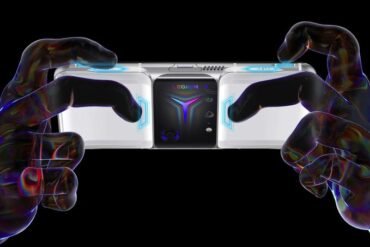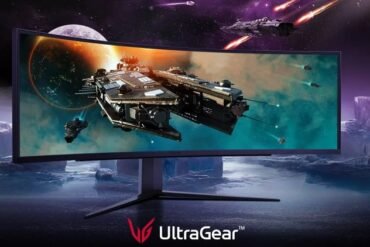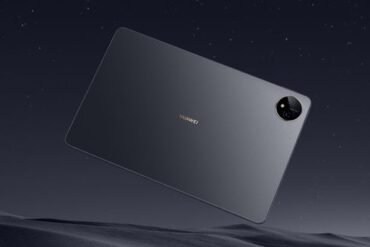Graphics Card Showdown: Which GPU Should You Buy?
Table of Contents
Introduction: The Battle Begins
When it comes to choosing a graphics card for your computer, the options can be overwhelming. There are so many different models and brands available, each promising better performance and superior graphics. So, how do you decide which GPU to buy?
In this article, we will dive into the world of graphics cards and help you make an informed decision. We will compare some of the top GPUs on the market, considering factors such as performance, price, and compatibility. By the end of this showdown, you will have a clearer picture of which graphics card is the right fit for your needs.
Before we delve into the details, it’s worth mentioning that graphics cards are an essential component of any gaming or multimedia system. They are responsible for rendering images, videos, and animations on your monitor. The better the graphics card, the smoother and more immersive your visual experience will be.
Now, let’s take a look at the contenders in this graphics card showdown:
- NVIDIA GeForce RTX 3080
- AMD Radeon RX 6800 XT
- Intel Xe-HPG
These three GPUs have been making waves in the market lately, with each boasting impressive specifications and performance. We will compare them across different categories to help you determine which one suits your specific requirements.
Whether you are a hardcore gamer, a professional video editor, or simply someone who wants to enjoy the latest movies in stunning detail, choosing the right graphics card is crucial. So, buckle up as we embark on this graphics card showdown and find out which GPU reigns supreme!
Performance Comparison: Speed Matters
When it comes to choosing a graphics card, one of the most important factors to consider is its speed and performance. Whether you are a gamer, a video editor, or a graphic designer, having a high-performing GPU can significantly enhance your experience and productivity. In this section, we will compare the speed of different graphics cards to help you make an informed decision.
1. Clock Speed:
- The clock speed, measured in gigahertz (GHz), determines how quickly a graphics card can process data. A higher clock speed means faster data processing, resulting in smoother and more responsive graphics.
- For example, the NVIDIA GeForce RTX 3080 has a base clock speed of 1.44 GHz and a boost clock speed of 1.71 GHz, making it one of the fastest GPUs on the market.
2. CUDA Cores:
- CUDA cores are parallel processing units found in NVIDIA graphics cards. The more CUDA cores a GPU has, the faster it can perform complex calculations and render graphics.
- The AMD Radeon RX 6800 XT, for instance, boasts 4,608 CUDA cores, while the NVIDIA GeForce GTX 1660 Ti has 1,536 CUDA cores.
3. Memory Bandwidth:
- Memory bandwidth refers to the speed at which data can be transferred between the GPU and its memory. A higher memory bandwidth allows for faster data transfer, resulting in improved performance.
- The AMD Radeon RX 6900 XT has a memory bandwidth of 512 GB/s, while the NVIDIA GeForce RTX 3070 offers 448 GB/s.
4. Ray Tracing Performance:
- Ray tracing is a rendering technique that simulates how light interacts with objects in a scene, resulting in realistic lighting and shadows. GPUs with dedicated ray tracing cores can provide superior performance in ray-traced games and applications.
- The NVIDIA GeForce RTX 3090, with its 82 ray tracing cores, delivers exceptional ray tracing performance compared to other graphics cards.
Remember, the speed and performance of a graphics card may vary depending on the specific model and manufacturer. It’s essential to consider your specific needs and budget when choosing the right GPU for your requirements. Take into account factors such as your intended usage, software compatibility, and future-proofing capabilities to make an informed decision.
Price-to-Performance Ratio: Bang for Your Buck
Choosing a graphics card can be an overwhelming task, especially with so many options available on the market. One crucial factor to consider is the price-to-performance ratio, which determines the value you’ll be getting for your hard-earned money. Here, we’ll explore the top contenders in terms of their bang for your buck.
1. NVIDIA GeForce GTX 1660 Super:
- Price: Around $230
- Performance: Excellent
- Features: Ray tracing support, VR ready
The GTX 1660 Super is a popular choice for budget-conscious gamers. It offers impressive performance for its price, making it an excellent option for 1080p gaming. With ray tracing support and VR readiness, it delivers a solid gaming experience without breaking the bank.
2. AMD Radeon RX 5600 XT:
- Price: Around $300
- Performance: Outstanding
- Features: High clock speeds, efficient power consumption
The RX 5600 XT is a mid-range powerhouse that offers exceptional performance for its price. It excels in 1080p and even performs well in 1440p gaming. With high clock speeds and efficient power consumption, it provides a great balance between affordability and performance.
3. NVIDIA GeForce RTX 3070:
- Price: Around $500
- Performance: Top-tier
- Features: Ray tracing, DLSS, 4K gaming capabilities
If you’re looking for the best performance without breaking the bank, the RTX 3070 is a great option. It offers top-tier performance, including ray tracing, DLSS, and 4K gaming capabilities. While it’s pricier compared to the other options mentioned, it provides excellent value for its performance.
It’s essential to consider your specific needs and budget when choosing a graphics card. While the options mentioned here offer excellent price-to-performance ratios, there may be other options available that suit your requirements better. Researching and comparing different models is key to finding the perfect GPU that offers the best bang for your buck.
Features and Compatibility: The Devil is in the Details
When it comes to choosing a graphics card for your PC, the features and compatibility are crucial factors to consider. These details can make a significant difference in the performance and overall experience of your gaming or professional work. Let’s dive into the key aspects to keep in mind:
1. GPU Architecture:
The architecture of a graphics processing unit (GPU) plays a vital role in determining its performance capabilities. Different GPUs employ various architectures, each with its strengths and weaknesses. Look for the latest and most efficient architectures, such as NVIDIA’s Turing or AMD’s RDNA, as they offer improved performance and power efficiency.
2. VRAM Capacity and Bandwidth:
The amount of Video RAM (VRAM) on a graphics card directly affects its ability to handle complex graphics and higher resolutions. Higher VRAM capacity allows for smoother gameplay and better multitasking. Additionally, pay attention to the VRAM’s bandwidth, as it determines the speed at which the GPU can access and process data.
3. Cooling and Power Requirements:
Graphics cards generate a significant amount of heat during operation. It is essential to consider the cooling solution offered by a GPU. Look for cards with efficient cooling systems, such as multiple fans or liquid cooling, to ensure optimal performance and longevity.
Furthermore, check the power requirements of the graphics card. Ensure that your power supply unit (PSU) can provide enough wattage to meet the card’s demands. Insufficient power can lead to instability and performance issues.
4. Display Outputs:
Consider the display outputs available on the graphics card and ensure they match your requirements. Check for the number of HDMI, DisplayPort, or DVI ports, depending on the monitors or VR headsets you plan to connect. It’s also worth confirming the maximum supported resolution and refresh rate.
5. Software Support and Updates:
The manufacturer’s software support can significantly impact your graphics card’s performance and compatibility. Regular driver updates ensure optimal performance in the latest games and software applications. Check user reviews and forums to gauge the manufacturer’s reputation for providing timely updates and customer support.
6. Compatibility with Motherboard and Power Supply:
Before finalizing a graphics card, ensure compatibility with your motherboard’s PCIe slot. Check the slot version (e.g., PCIe 3.0 or PCIe 4.0) and the physical space available for the card. Additionally, consider the power supply connectors required by the GPU and ensure your PSU has the necessary cables.
By considering these features and compatibility factors, you can make an informed decision when choosing a graphics card that meets your needs and budget. Remember, the devil is in the details, and paying attention to these specifics can make a world of difference in your gaming or professional endeavors.
Final Verdict: Making the Right Choice
Choosing the right graphics card can be a daunting task, especially with the myriad of options available in the market. However, by considering your specific needs and budget, you can make an informed decision that will enhance your gaming or professional experience. Here’s a recap of the key points to help you make the right choice:
- Performance: If you’re a hardcore gamer or a professional in need of high-performance graphics, the NVIDIA GeForce RTX 3080 is the clear winner. It offers unparalleled performance, ray tracing capabilities, and DLSS technology for a truly immersive gaming experience.
- Value for Money: For those on a budget, the AMD Radeon RX 5700 XT offers impressive performance at a more affordable price point. It’s a great option for gamers looking to step up their graphics without breaking the bank.
- Future-Proofing: If you want a graphics card that can handle upcoming games and technologies, the NVIDIA GeForce RTX 3080 is the best choice. Its advanced features and powerful performance will ensure you’re ready for the future.
- Compatibility: Before making a purchase, make sure to check the compatibility of the graphics card with your existing system. Consider factors such as power requirements, physical dimensions, and the availability of necessary connectors.
- Brand Preference: Some users may have a preference for a specific brand based on their past experiences or loyalty. Both NVIDIA and AMD have their own advantages and loyal user bases, so consider your brand preference when making your decision.
Ultimately, the choice of graphics card depends on your specific needs, budget, and personal preferences. While the NVIDIA GeForce RTX 3080 is the undisputed champion in terms of performance and future-proofing, the AMD Radeon RX 5700 XT offers excellent value for money. Additionally, don’t forget to consider compatibility and brand preference when making your final decision. Whatever you choose, both options will undoubtedly elevate your gaming or professional experience to the next level.


























